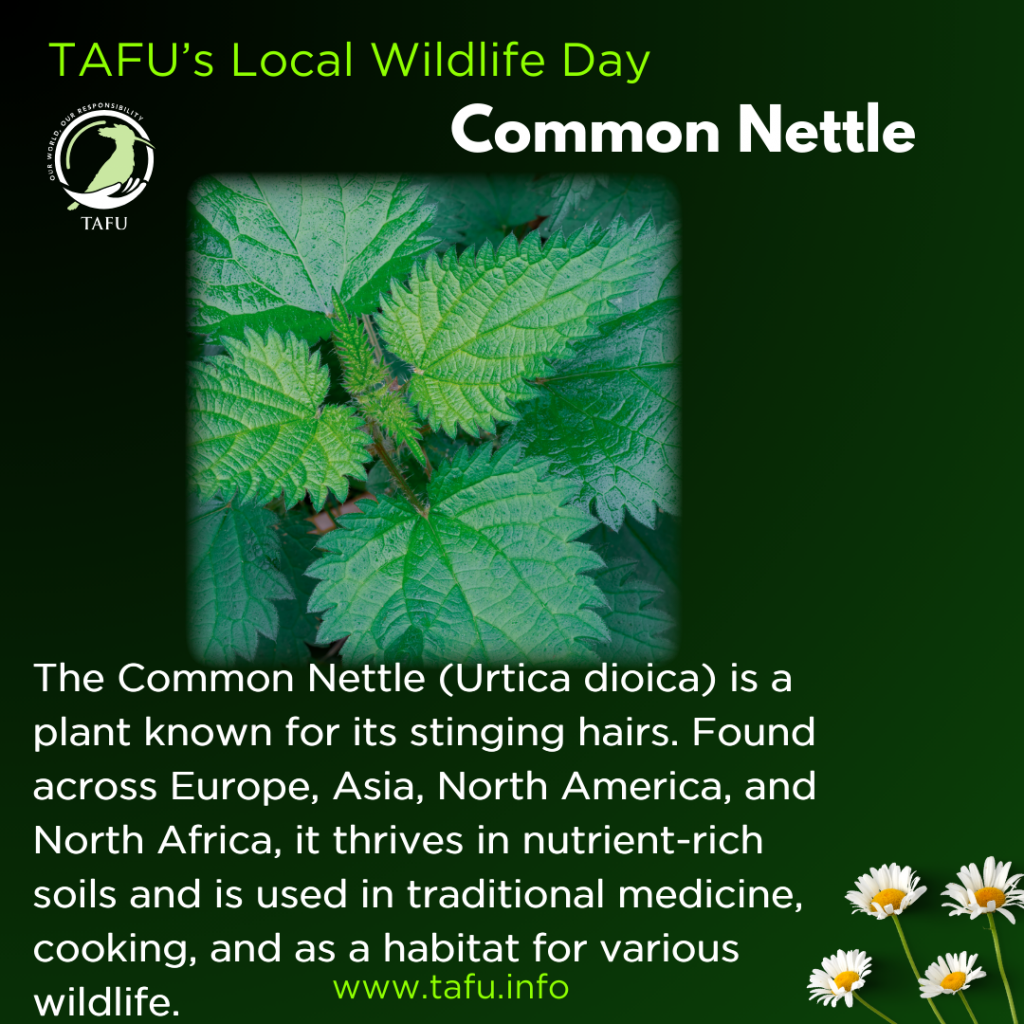Common Nettle
As part of the countdown to TAFU’s Local Wildlife Day on the 11th of July – Species no. 34.
Stay tuned – 9 more days and 9 more species until then!
The Common Nettle (Urtica dioica) is a hardy, perennial herbaceous plant that grows between 1-2 meters in height. It is easily recognisable by its jagged-edged, slightly heart-shaped leaves and the stinging hairs that cover its stems and leaves. These hairs contain chemicals that can cause a stinging sensation and mild rash upon contact with the skin.
Nettles are highly adaptable and thrive in a variety of habitats, including woodlands, grasslands, gardens, and wastelands. They prefer nutrient-rich, moist soils and are often found in areas with high levels of organic matter. Common Nettles are an important plant in many ecosystems, serving as a food source for numerous insects, including caterpillars of the Small Tortoiseshell, Peacock butterflies, and is even very healthy for us!
Despite their reputation for causing irritation, Common Nettles have a long history of use in traditional medicine and cooking. They are rich in vitamins A, C, K, and several B vitamins, as well as minerals such as iron, calcium, and magnesium. Nettles are used to make teas, soups, and other dishes after being cooked or dried to neutralise their stinging chemicals. Medicinally, they have been used to treat conditions such as arthritis, hay fever, and anemia due to their anti-inflammatory and diuretic properties.
The flowering season for Common Nettle typically runs from May to September. Nettles are wind-pollinated and produce large quantities of seeds, which can remain viable in the soil for several years, contributing to their widespread distribution.
Allowing a portion of green spaces to remain wild, providing a habitat for these plants and the wildlife that depends on them can be extremely beneficial. Avoiding the use of herbicides can also help maintain their populations.

